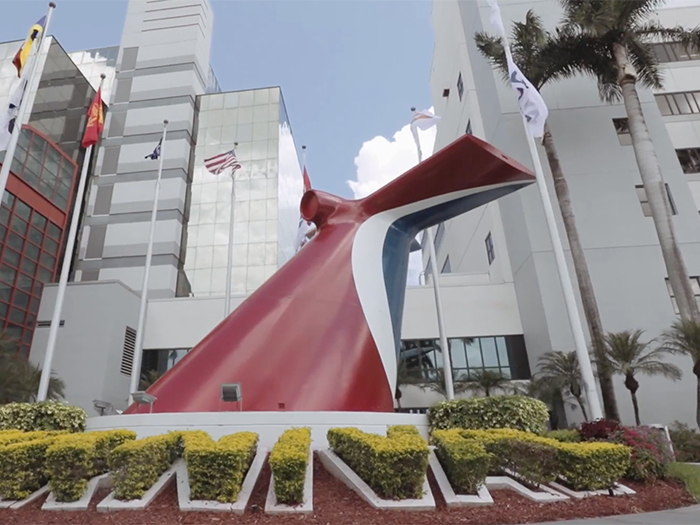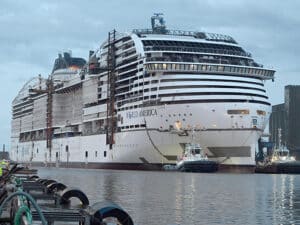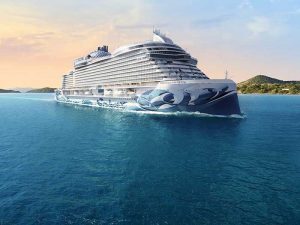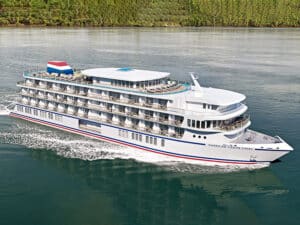
Carnival Corporation to accelerate ship disposals
Written by Nick Blenkey
“We have been transitioning the fleet into a prolonged pause and right sizing our shoreside operations,” said Carnival Corporation & plc President and CEO Arnold Donald, in a business update for the second quarter released today. “We have already reduced operating costs by over $7 billion on an annualized basis and reduced capital expenditures also by more than $5 billion over the next 18 months.”
He added that Carnival had secured over $10 billion of additional liquidity to sustain another full year with additional flexibility remaining.
“We have aggressively shed assets while actively deferring new ship deliveries,” he continued. “We are working hard to resume operations while serving the best interests of public health with our way forward informed through consultation with medical experts and scientists from around the world.”
SHIP DISPOSALS
Carnival says it expects future capacity to be moderated by the phased re-entry of its ships, the removal of capacity from its fleet and delays in new ship deliveries. It intends to accelerate the removal of ships in fiscal 2020 that it had previously expected to be sold over following years. One ship was sold in June 2020 and it has agreements for the disposal of five ships and preliminary agreements for an additional three ships, all of which are expected to leave the fleet in the next 90 days.
These agreements are in addition to the sale of four ships, which were announced prior to fiscal 2020. In total, the 13 ships expected to leave the fleet represent a nearly nine percent reduction in current capacity. The company currently expects only five of the nine ships originally scheduled for delivery in fiscal 2020 and fiscal 2021 will be delivered prior to the end of fiscal year 2021. In addition, the company expects later deliveries of ships originally scheduled for fiscal 2022 and 2023.
“We will emerge a leaner, more efficient company to optimize cash generation, pay down debt and position us to return to investment grade credit over time providing strong returns to our shareholders,” said Donald.
The company reports it has raised over $10 billion through a series of financing transactions since the pause in guest operations.
Chief Financial Officer and Chief Accounting Officer David Bernstein noted, “Quickly recognizing the financial situation, we took swift action to improve our liquidity by reducing expenses and leveraging our strong balance sheet to complete several capital transactions”.
CASH BURN
During the pause in guest operations, the monthly average cash burn rate for the second half of 2020 is estimated to be approximately $650 million. This rate includes approximately $250 million of ongoing ship operating and administrative expenses, working capital changes (excluding changes in customer deposits and reserves for credit card processors), interest expense and committed capital expenditures (net of committed export credit facilities) and also excludes scheduled debt maturities. The company says it continues to explore opportunities to further reduce its monthly cash burn rate.
The pause in guest operations is continuing to have material negative impacts on all aspects of the company’s business. The longer the full or partial pause in guest operations continues, the greater the impact on the company’s liquidity and financial position. The company continues to expect a net loss on both a U.S. GAAP and adjusted basis for the second half of 2020.
BOOKINGS
Carnival’s brands have announced various incentives and flexibility for certain booking payments on select sailings that vary by brand and sailing and include onboard credits and reduced or refundable deposits. In addition, the company is providing flexibility to guests with bookings on sailings cancelled due to the pause by offering guests the flexibility of enhanced future cruise credits or an election for a refund in cash. Enhanced FCCs increase the value of the guest’s original booking or provide incremental onboard credits. As of June 21, 2020, approximately half of guests affected have requested cash refunds. Despite substantially reduced marketing and selling expenditure, the company says it continues to see demand from new bookings for 2021. For the most recent booking period, the first three weeks in June 2020, almost 60 percent of 2021 bookings were new bookings. The remaining 2021 booking volumes resulted from guests applying their FCCs to specific future cruises.
“As of June 21, 2020,” reports Carnival, “cumulative advanced bookings for the full year of 2021 capacity currently available for sale remain within historical ranges at prices that are down in the low to mid-single digits range, on a comparable basis, including the negative yield impact of FCCs and onboard credits applied.”
As of May 31, 2020, the current portion of customer deposits was $2.6 billion, the majority of which are FCCs. $121 million of the company’s customer deposit balance relates to third quarter sailings and $353 million relates to fourth quarter sailings. The company continues to expect any decline in the customer deposits balance in the second half of 2020, all of which is expected to occur in the third quarter, to be significantly less than the decline in the second quarter of 2020.
SUCCESSFULLY REPATRIATES “SUBSTANTIALLY ALL” SEAFARERS
In addition to returning over 260,000 guests to their homes, Carnival has utilized its ships and chartered hundreds of planes to repatriate shipboard personnel as quickly as possible. It says it has repatriate approximately 77,000 of its shipboard team members to more than 130 countries around the globe, It says this is substantially all of its onboard workforce other than the safe manning team members who will remain on the ships.




